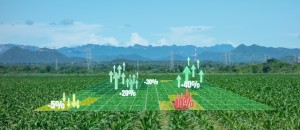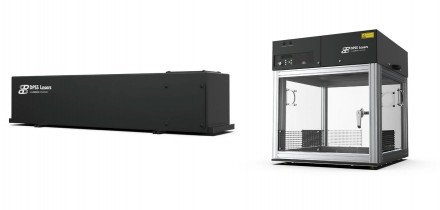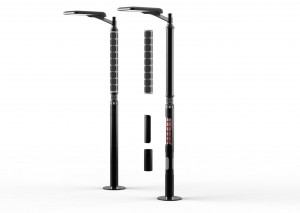
Precision agriculture is an innovative approach to farming that leverages advanced technologies to increase productivity and efficiency in agricultural operations. By optimizing inputs such as water, nutrients, and labor, precision agriculture helps maximize crop yield while minimizing waste and environmental impact. One of the key technologies enabling precision agriculture is machine vision, which provides farmers with detailed, real-time data on crop health and field conditions. This article will explore how machine vision is transforming precision agriculture and discuss its applications and benefits.
The Role of Machine Vision in Precision Agriculture
Machine vision uses cameras and sensors to capture images and data from agricultural fields, which can then be analyzed to provide insights into crop health, soil conditions, and more. This technology allows farmers to make data-driven decisions and take targeted actions to optimize their operations. Some of the key areas where machine vision is making a significant impact include:
1. Monitoring Crop Health
Machine vision systems can analyze images of crops to assess their health and detect early signs of stress or disease. By identifying issues such as nutrient deficiencies or pest infestations, farmers can take swift action to address the problem and prevent crop loss. This proactive approach helps ensure the overall health and productivity of the crops.
As an example, the Normalized Difference Vegetation Index (NDVI) measures the greenness and density of vegetation. NDVI = (NIR – Red) / (NIR + Red). Healthy plants reflect more near-infrared (NIR) light and less red light versus unhealthy plants. Monitoring NDVI, especially in the early plant growth stages, allows farmers to act against potential crops issues.
2. Optimizing Water Usage
Water management is a critical aspect of farming, especially in regions with limited water resources. Machine vision systems can monitor soil moisture levels and track crop water stress, enabling farmers to optimize irrigation schedules and reduce water waste. By providing precise information on when and where to water, machine vision helps conserve this valuable resource.
3. Managing Weeds and Pests
Machine vision can also be used to identify and monitor the presence of weeds and pests in agricultural fields. By detecting these threats early, farmers can apply targeted treatments to specific areas, minimizing the need for broad-spectrum pesticides and reducing the environmental impact.
4. Analyzing Plant Growth and Yield
Machine vision systems can capture data on plant growth and development, allowing farmers to monitor crop performance over time. This information can be used to predict harvest dates and estimate yields, helping farmers plan their operations and make informed decisions.
5. Harvesting Automation
Machine vision plays a crucial role in automated harvesting systems by guiding robots and machines to identify and pick fruits and vegetables. This technology reduces the need for manual labor and increases efficiency, leading to cost savings and improved productivity.
Short-Wave Infrared (SWIR) Imaging in Precision Agriculture
In addition to traditional imaging techniques, short-wave infrared (SWIR) imaging is emerging as a valuable tool in precision agriculture. SWIR imaging offers unique advantages for analyzing plants, soils, and other agricultural materials. It provides enhanced visibility and can penetrate certain materials, making it particularly useful for detecting moisture, identifying plant stress, and assessing nutrient levels.
Like the above NDVI index, the Normalized Difference Water Index (NDWI) is an effective method to measure the water content of leaves. NDWI = (NIR – SWIR) / (NIR + SWIR). Water absorbs specific short-wave infra-red (SWIR) wavelengths and NIR provides information on leaf dryness.
Advantages of SWIR Imaging
- Moisture Detection: SWIR imaging can measure water content in plants and soil, allowing farmers to optimize irrigation practices.
- Nutrient Analysis: SWIR imaging can help identify nutrient deficiencies in crops, enabling the targeted application of fertilizers.
- Enhanced Plant Health Monitoring: SWIR imaging can detect subtle changes in plant health that may not be visible in the visible spectrum.
- Better Crop Quality Control: SWIR imaging can assess crop quality during harvesting and sorting, ensuring consistent quality.
Challenges and Future Outlook
While machine vision offers significant benefits for precision agriculture, there are some challenges to consider. These include the high cost of implementing advanced imaging systems and the need for skilled personnel to operate and maintain the technology. Additionally, data management and analysis can be complex, requiring robust infrastructure and expertise.
Despite these challenges, the outlook for machine vision in precision agriculture is promising. As technology continues to advance and becomes more accessible, farmers can expect to see even greater benefits from its adoption. Machine vision will play a vital role in addressing the challenges of feeding a growing global population while minimizing the impact on natural resources.
Increasing Productivity, Efficiency and Sustainability
Machine vision is transforming precision agriculture by providing farmers with actionable insights and enabling data-driven decision-making. Through applications such as crop health monitoring, water management, and automated harvesting, machine vision is helping farmers increase productivity, efficiency, and sustainability. With the integration of short-wave infrared (SWIR) imaging additional information can be provided to farmers to improve agricultural science. By embracing these technologies, farmers can work towards a future where agriculture is more sustainable, efficient, and capable of meeting the pressure of a global and increasing demand for food.
Written by Mark Butler, Product Manager, Teledyne DALSA































 Back to Features
Back to Features



























